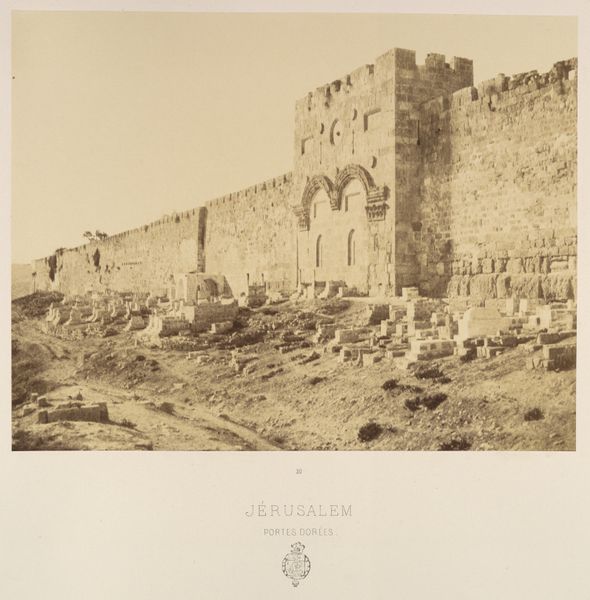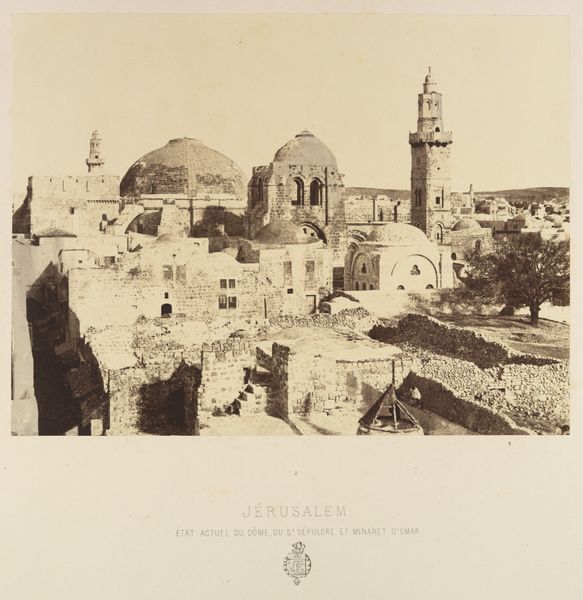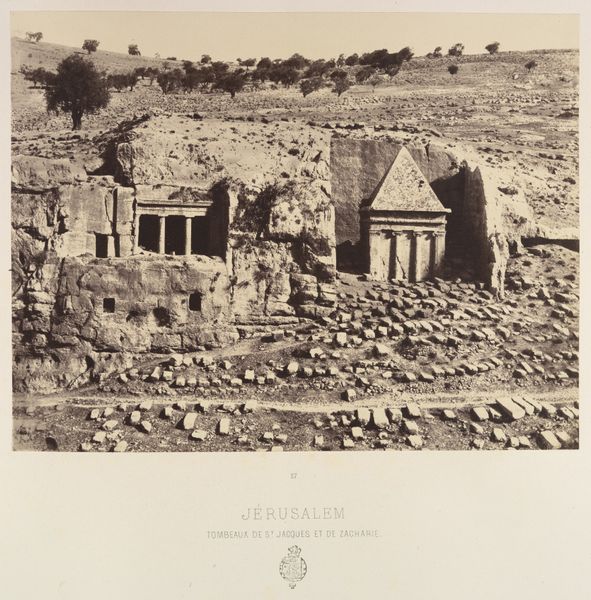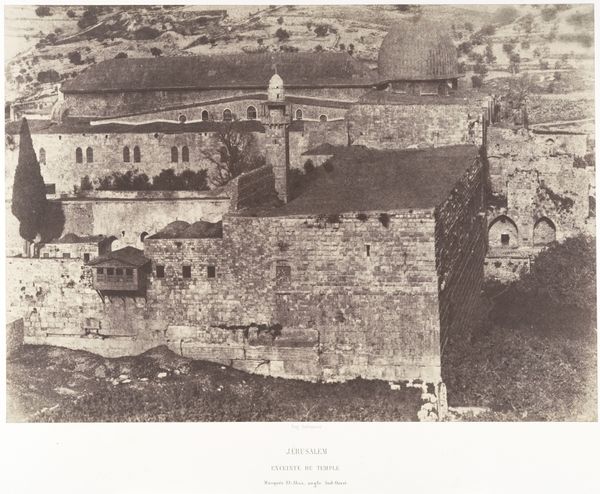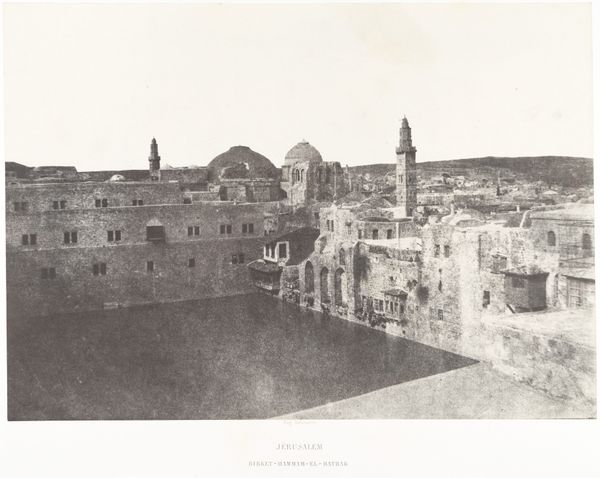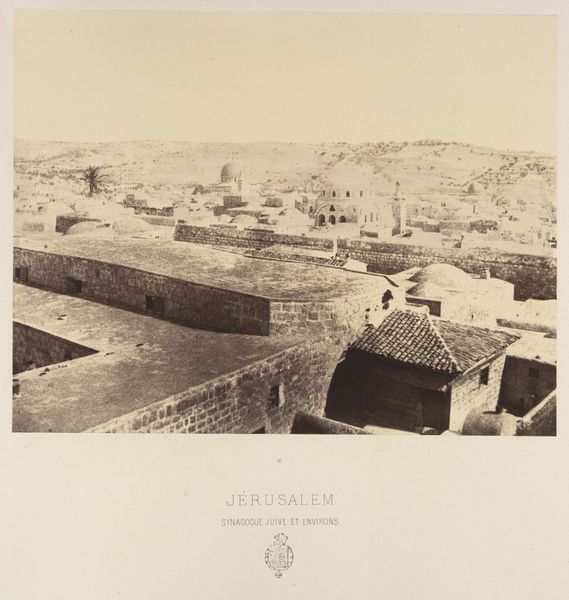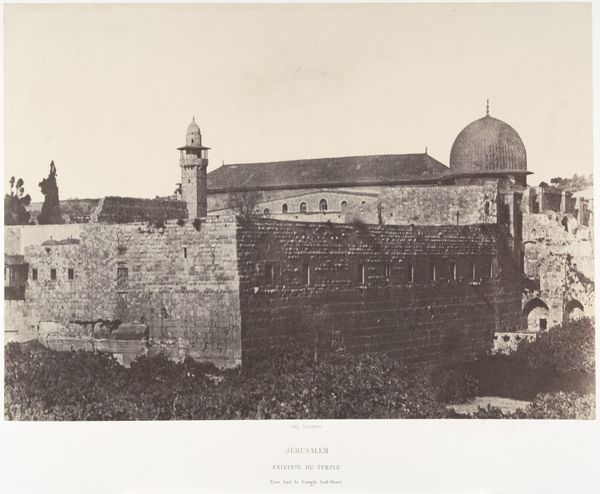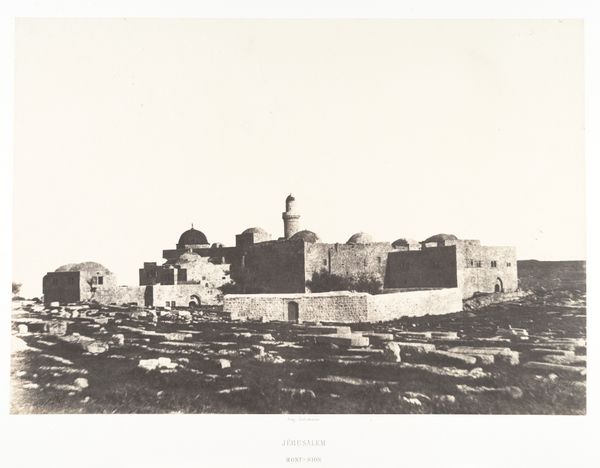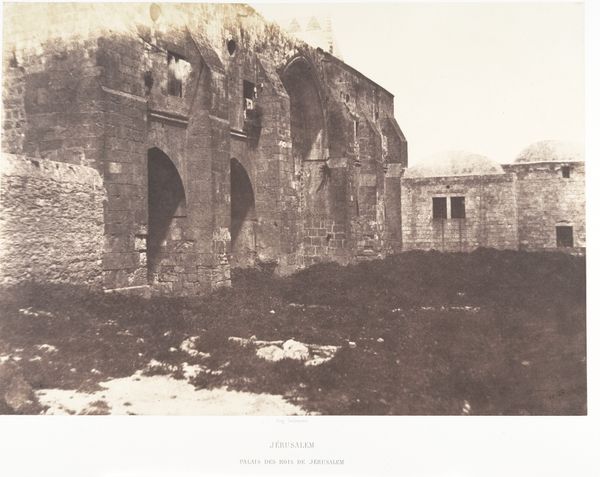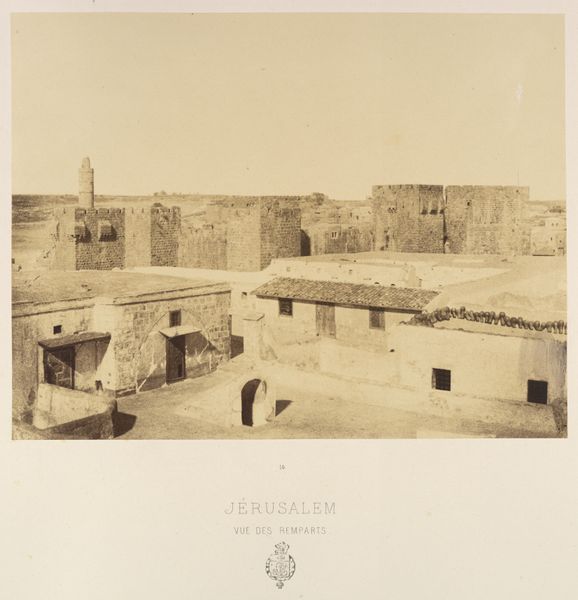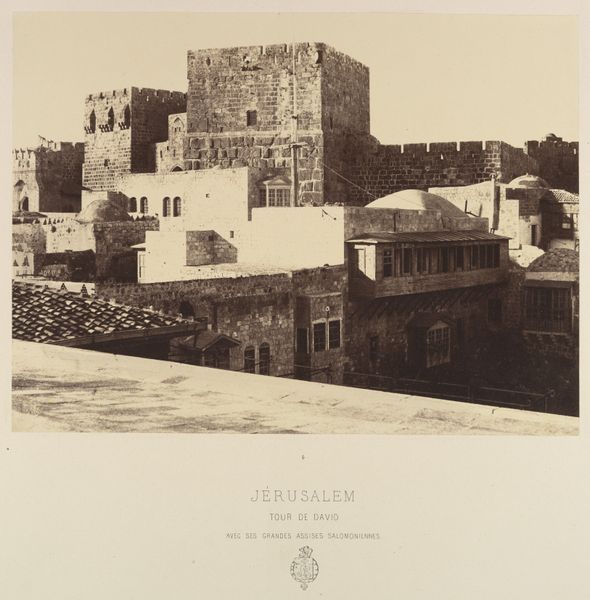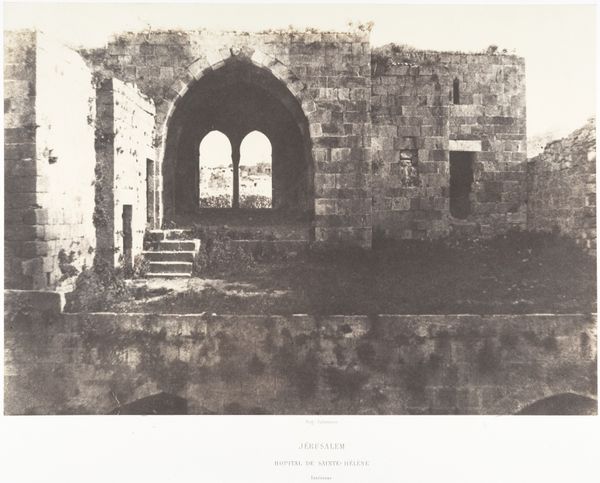
Jérusalem. Église Ste Anne appartenant à la France 1860
0:00
0:00
photography, architecture
#
landscape
#
photography
#
ancient-mediterranean
#
architecture
Dimensions: Image: 8 7/16 in. × 11 in. (21.4 × 28 cm) Mount: 17 15/16 × 23 1/4 in. (45.5 × 59 cm)
Copyright: Public Domain
Curator: This stunning photograph by Louis de Clercq, taken around 1860, captures the Church of Saint Anne in Jerusalem. It's a powerful image of a place laden with history. Editor: It really is. The somber tones give it such a sense of weight and the rough textures, those stones scattered across the foreground... they speak of something ancient and enduring, yet maybe a little forgotten? Curator: The church's architecture itself is fascinating. You see the Romanesque influence, and the structure sits on the traditional site of the home of Jesus's maternal grandparents, Anne and Joachim. The French inscription below the image tells you the Church belonged to France, highlighting France's ambition for influence in the region during the 19th century. Editor: Right, it definitely has this feeling of being a place of significant spiritual intersection. I'm struck by the dome, that half-sphere representing the heavens, sitting atop the solid, earthly walls. A visual language reflecting both heaven and earth and the passage between them. Curator: Precisely! This area was hotly contested throughout the 19th century and owning sacred spaces lent credibility and legitimacy. De Clercq's choice to highlight this location reflects France's attempt to claim this visual association with power and faith, especially through the camera lens. Editor: Photography during this time... it becomes a tool for documenting both the tangible and the intangible, doesn’t it? Look at how de Clercq's choice to present the building creates that somber emotional connection. The symbols resonate and invite this cultural memory. Curator: Absolutely. His composition guides our gaze toward these monuments that became crucial emblems of nation-building efforts, cultural imperialism and ultimately... control. This single photograph, in the end, reminds us of that very complicated historical narrative. Editor: Looking at it this way makes you think how a seemingly simple architectural study holds layers of meanings. The architecture certainly speaks, not just in its structure but through the narratives it subtly conveys. Curator: Yes, exactly. Thank you for this reading, because this photo provides indeed a poignant commentary on a place that continues to hold such immense historical weight.
Comments
No comments
Be the first to comment and join the conversation on the ultimate creative platform.
